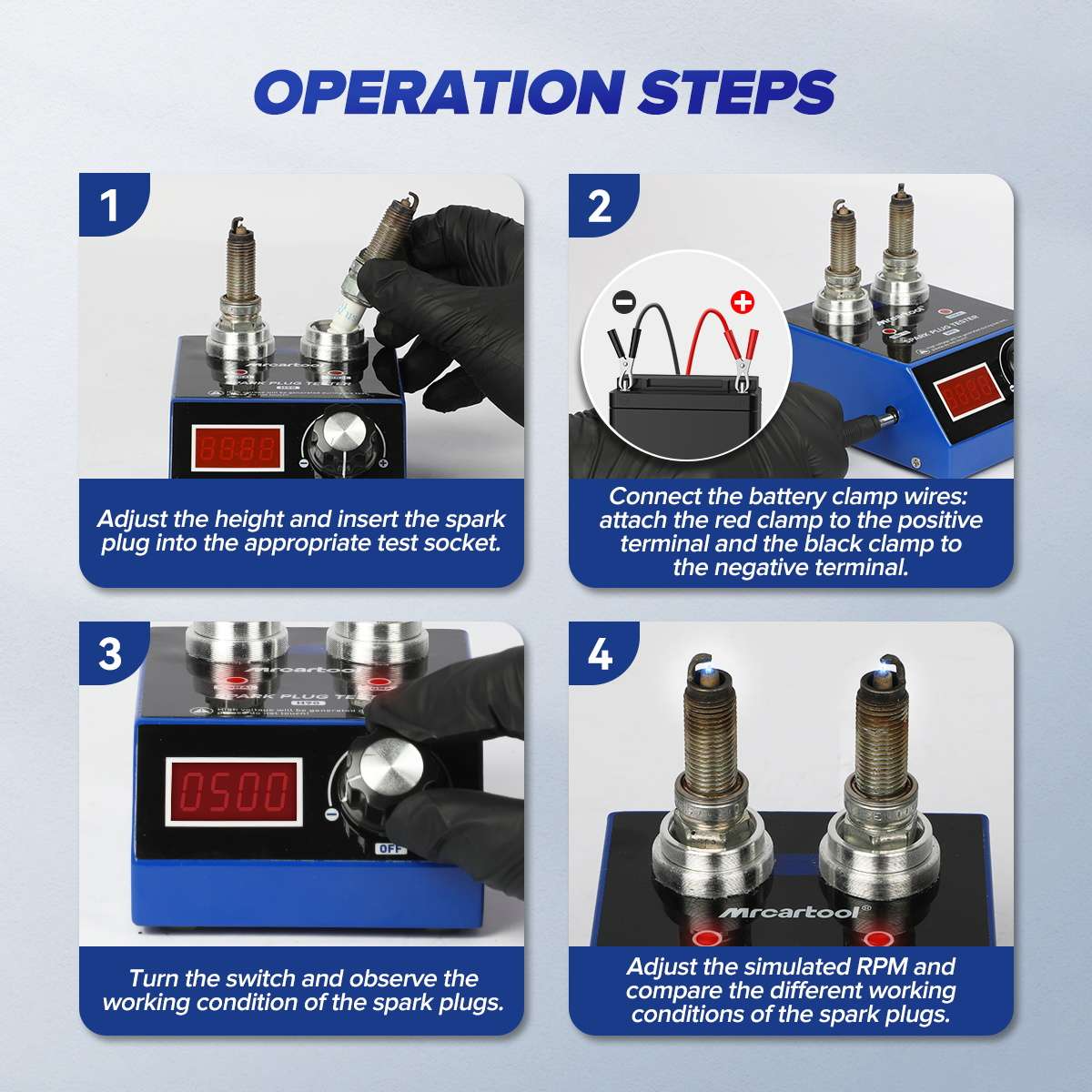
How to Test Spark Plugs?
- Tammy
- April 28, 2025

The engine relies on the smooth operation of multiple components, and spark plugs play a crucial role in ensuring the engine runs properly. If your vehicle is experiencing misfires, rough running, or difficulty starting, worn spark plugs could be the culprit. This article will guide you on how to check spark plugs to ensure your vehicle operates smoothly.
Why are Spark Plugs So Important?
Although spark plugs are a small component in the engine, they play a crucial role in the engine’s performance. The spark they generate ignites the air-fuel mixture in the combustion chamber, providing power to the vehicle. If the spark plugs are not functioning properly, the engine will not run smoothly and may even fail to start.
Where are Spark Plugs Located?
The location of the spark plugs depends on the type of engine in your vehicle. In common engine configurations, the position of the spark plugs varies:
- Inline Engine: Spark plugs are usually located at the top or side of the engine block.
- V-type Engine (e.g., V6 or V8): Spark plugs are typically located on both sides of the engine.
- Modern Vehicles: In some vehicles, you need to remove the ignition coil to access the spark plugs for testing.
To ensure you correctly locate the spark plugs, it’s best to consult your vehicle’s owner’s manual or repair manual.
Signs of Spark Plug Damage
Over time, spark plugs wear out due to high temperatures, carbon deposite, and regular use. Faulty spark plugs can lead to decreased fuel efficiency, engine misfires, poor acceleration, and even difficulty starting the vehicle. Watch out for these common signs of spark plug failure:
- Engine Misfire: If the engine exhibits shaking or instability while driving, it could be due to the spark plugs failing to ignite the air-fuel mixture properly.
- Unstable Idle: Damaged spark plugs can cause irregular vibrations or shaking while the engine is idling.
- Difficulty Starting: If the vehicle has trouble starting, it might be because the spark plugs are not effectively igniting the fuel.
- Poor Fuel Economy: Worn spark plugs can cause the engine to burn excess fuel, leading to increased fuel costs.
- Sluggish Acceleration: If the vehicle responds sluggishly when accelerating, it could be an ignition problem caused by a faulty spark plug.
- Check Engine Light: A spark plug failure can often trigger the check engine light, indicating issues with the vehicle’s ignition system.
If you notice any of these issues with your vehicle, the spark plugs may be damaged. Inspect and replace them promptly to restore vehicle performance.
How to Test Spark Plugs?
-
 MRCARTOOL Car Spark Plug Tester with Auto Adjustable for 12V Vehicles
Rated 5.00 out of 5 based on 10 customer ratings
MRCARTOOL Car Spark Plug Tester with Auto Adjustable for 12V Vehicles
Rated 5.00 out of 5 based on 10 customer ratings$25.90Original price was: $25.90.$21.90Current price is: $21.90. -
MRCARTOOL H90 Spark Plug Tester Tool Dual Hole
Rated 5.00 out of 5 based on 15 customer ratings$49.99Original price was: $49.99.$29.90Current price is: $29.90.
Using professional tools, such as the MRCARTOOL H90 adjustable spark plug tester, you can quickly and accurately test whether the spark plug generates a stable spark strong enough to ignite the air-fuel mixture in the combustion chamber. Here are the specific steps for testing spark plugs:
Operating Steps
Step 1: Adjust the height and insert the spark plug
- First, make sure the spark plug is correctly installed into the test socket of the MRCARTOOL H90 adjustable spark plug tester. Adjust the height of the tester so that the spark plug is in the proper testing position.
Step 2: Connect the battery clamps
Use the battery clamps to connect the tester to the power source. Make sure that:
- Connect the red battery clamp to the positive terminal (+).
- Connect the black battery clamp to the negative terminal (-).
Make sure you securely connect the battery clamps to avoid poor connections that could affect test results.
Step 3: Start the test and observe the spark plug’s performance
Turn on the tester and begin the test. Observe whether the spark plug generates a stable spark.
- If the spark is strong and consistent, the spark plug is functioning properly.
- If the spark is weak or completely absent, it indicates that the spark plug may be damaged and needs to be replaced.
Step 4: Adjust the simulated RPM and compare different operating conditions
Adjust the RPM simulator on the tester to set different speeds for testing. By changing the RPM, you can observe how the spark plug performs under various loads.
- When testing at lower RPM, observe whether the spark remains stable.
-
When testing at higher RPM, ensure the spark plug can still effectively generate a spark, maintaining engine performance.

Conclusion
The MRCARTOOL H90 adjustable spark plug tester allows you to easily check spark plug performance, ensuring optimal engine ignition. Regular checks extend engine life, improve fuel efficiency, and reduce repair costs. Timely replacement or cleaning of faulty spark plugs helps prevent serious engine issues.
We hope the testing steps provided in this blog help you better maintain your vehicle and ensure a great driving experience. If you have any questions or need further assistance, feel free to contact us at any time!







































